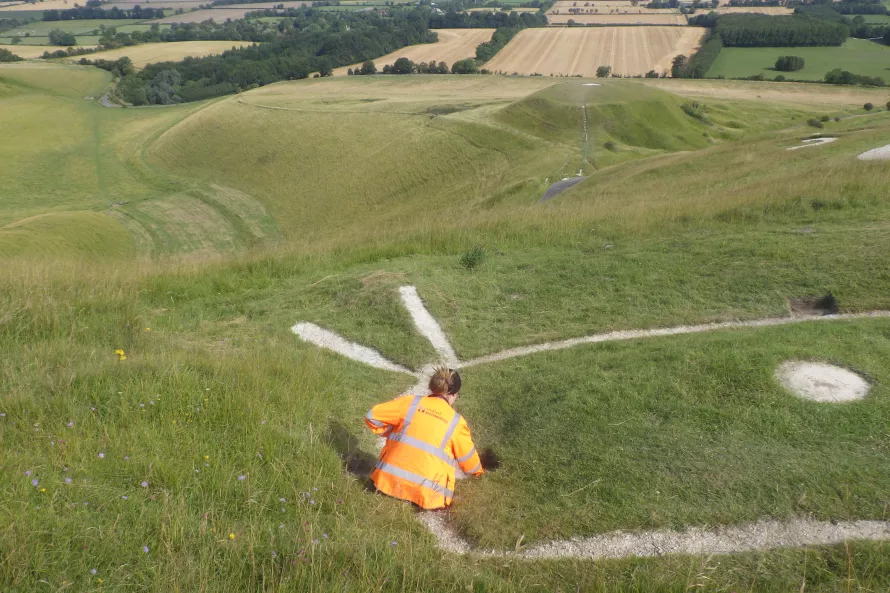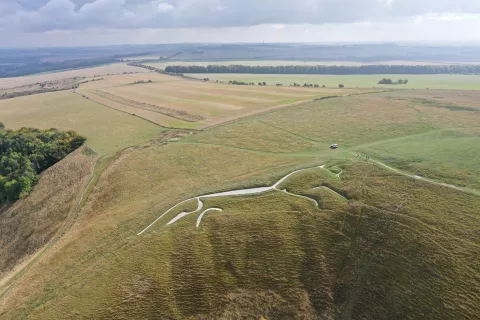After a wet and miserable start on a typical Monday morning in July there was a rare occurrence of the old team of Miles & Palmer seen in digging action. The results from the six excavated slots were clear and demonstrated that yes, the buried Horse was in fact just beneath the topsoil. The chalk of the Horse revealed beneath the turf was ‘dome-shaped’ with its edges disappearing under soil layers different from and overlain by the topsoil; layers we did not have permission to remove. This was what we hoped – the more recent Horse, that had disappeared over the last thirty or so years, was still there and indications that perhaps wider extents were still buried. It would be too simplistic, perhaps, to relate the visible chalk beneath the turf to the extent of the 1989 survey, and the hidden wider extents reflecting the 1926 and 1937 surveys. Yet, the extents showing on the1989 survey matched closely.
The earlier twentieth century surveys showed a shifted position and thicker outlines than the newly exposed chalk. Looking closely at the ground and the topography, it is clear that this shift is a result of some ‘survey error’: probably inaccuracies in the manual terrestrial based surveys and also general error in the combination of all the surveys at this enlarged scale.
With these trenches open all parties met to review the results and agreed that after due consideration further proposals on how to proceed should be submitted with a view to doing more work in 2024. You cannot rush matters with such an esteemed equine of ancient lineage!



